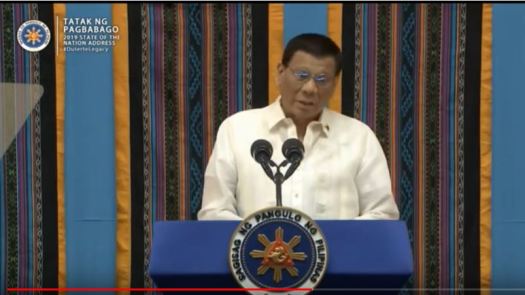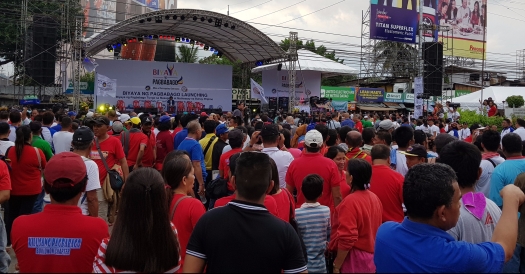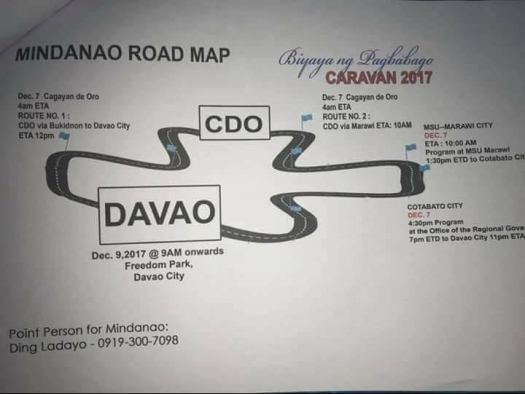My take on President Duterte’s 2019 SONA
The Philippines is at the losing end if the current tension at the West Philippines Sea leads to war. This is what we sensed while listening to the State of the Nation Address of President Rodrigo Roa Duterte on July 22, 2019.
“The avoidance of conflict — armed conflict and protection of our territorial waters and natural resources compel us to perform a delicate balancing act. A shooting war is grief and misery multiplier. War leaves widows and orphans in its wake. I am not ready or inclined to accept the occurrence of more destruction, more widows and more orphans, should war, even on a limited scale, breaks out. More and better results can be reached in the privacy of a conference room than in a squabble in public. That is why I will do in the peaceful way, mindful of the fact that it is our national pride and territorial integrity that are at stake,” President Duterte said.
“There is no ifs and buts. It is ours. But we have been acting, [applause] along that legal truth and line. But we have to temper it with the times and the realities that we face today,” he concluded.
In a nutshell, President Duterte is not willing to risk war and prefers to resolve the dispute over the West Philippine Sea in a peaceful way. But he will do this with “national pride and territorial integrity” in mind.
Global significance
Is this possible as China slowly creeps inside the West Philippine Sea? For China, the impetus is quite strong to bully a country considered weak and gain dominance on a strategic global economic corridor.
Let’s take a look at the strategic location of the West Philippine Sea, or the South China Sea, for example.
Robert D. Kaplan, the chief geopolitical analyst of the private global intelligence firm Stratfor, wrote this brief description in his book Asia’s Cauldron: The South China Sea and the End of a Stable Pacific:
“The South China Sea functions as the throat of the Western Pacific and Indian oceans — the mass of connective economic tissue where global sea routes coalesce. Here is the heart of Eurasia’s navigable rimland, punctuated by the Malacca, Sunda, Lombok, and Makassar straits. More than half of the world’s annual mechant fleet tonnage passes through these choke points, and a third of all maritime traffic worldwide. The oil transported through the Malacca Strait from the Indian Ocean, en route to East Asia through the South China Sea, is triple the amount that passes through the Suez Canal and fifteen times the amount that transits the Panama Canal. Roughly two-thirds of South Korea’s energy supplies, nearly 60 percent of Japan’s and Taiwan’s energy supplies, and 80 percent of China’s crude oil imports come through the South China Sea. Whereas in the Persian Gulf only energy is transported, in the South China Sea you have energy, finished goods, and unfinished goods.
Kaplan likewise “cites proven oil reserves of seven billion barrels, and an estimated 900 trillion cubic feet of natural gas.”
US-China dynamics
For the weak states with claims on the West Philippine Sea or the South China Sea like the Philippines, the options range from unity with all other claimants, wielding the international arbitral decision supporting its claims, and alliance with the United States.
Kaplan noted that the U.S. Navy is the dominant military force at the West Philippine Sea. However, the Americans have been downsizing its military through the decades even as the Chinese navy has grown dramatically.
Unfortunately, on top of the Chinese moves like building military-fortified islands, the Chinese-American trade war is bound to intensify tensions.
Still, unlike previous Philippine leaders who leaned on country’s military ties with the United States, President Duterte opted to befriend China and proceeded to forge bilateral dialogues with Chinese leaders.
Will President Duterte’s China maneuver work for peace while upholding Philippine interests? As China and the United States flex their muscles amid territorial claims, more maritime incidents and tense moments are bound to happen.
Let’s keep monitoring the West Philippine Sea as these unfold.
#SONA2019

























You must be logged in to post a comment.